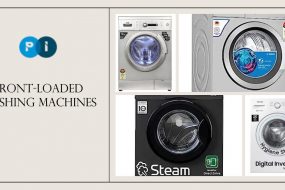Fashion is an ever-evolving industry, with new styles, trends, and designs emerging constantly. But what happens to fashion products once they have reached the end of their life cycle? In this article, we will take a closer look at the life cycle of a fashion product and the various stages it goes through, from conception to obsolescence.
Conception
The life cycle of a fashion product begins with its conception. This stage is when designers and fashion houses come up with ideas for new products, sketch designs, and create prototypes. The conception stage is critical as it sets the foundation for the rest of the product’s life cycle. During this stage, designers consider factors such as consumer needs, market trends, and production costs.
[content-egg-block template=text_links]
Development
Once the conception stage is complete, the fashion product moves on to the development stage. During this stage, designers finalize their designs, select materials and colors, and create samples for testing. The development stage is where the product is refined and perfected to ensure it is ready for production.
Production
Once the product has been developed, it moves on to the production stage. This is where the product is manufactured and brought to market. The production stage is critical as it determines the quality and quantity of the product that will be available for consumers. This stage is also where the product is priced, and the marketing strategy is developed to ensure the product is well received by consumers.
Introduction
Once the product has been produced, it moves on to the introduction stage. This is where the product is first introduced to the market, and the marketing strategy is put into action. During this stage, the product is launched, and advertisements and promotions are used to generate interest and demand. The introduction stage is critical as it determines the success of the product and sets the tone for the rest of its life cycle.
Growth
If the product is well received by consumers during the introduction stage, it moves on to the growth stage. During this stage, demand for the product increases, and production is ramped up to meet this demand. The growth stage is where the product becomes established in the market and begins to gain recognition.
Maturity
Once the product has reached the growth stage, it moves on to the maturity stage. During this stage, demand for the product begins to level off, and sales begin to stabilize. This is where the product has reached its peak and begins to decline. The maturity stage is also where the product may undergo changes, such as updates to the design or production methods, to maintain its competitiveness in the market.
Decline
Once the product has reached the maturity stage, it moves on to the decline stage. During this stage, demand for the product decreases, and sales begin to decline. This is where the product becomes obsolete, and the decision is made to discontinue production. The decline stage is where the product is eventually phased out and replaced by new, more relevant products.
Obsolescence
Once the product has reached the decline stage, it moves on to the obsolescence stage. During this stage, the product is no longer produced or sold, and the focus shifts to disposing of the remaining inventory. The obsolescence stage is where the product is finally retired, and its life cycle comes to an end.
The life cycle of a fashion product is a complex process that involves many stages and factors. Understanding this process is important for both designers and consumers, as it provides insight into the creation and evolution of fashion products. The life cycle of a fashion product is a continuous cycle, with new products being developed to replace those that have reached the end of their life cycle. It is crucial for fashion companies to understand the life cycle of their products and plan accordingly, such as by developing strategies to maintain the popularity of mature products or to phase out declining products.
Consumers also play a significant role in the life cycle of a fashion product. Their demand and purchasing habits influence the success or failure of a product, and ultimately determine its place in the market. It is essential for consumers to be mindful of their fashion choices and consider the impact they have on the industry.
In the fast-paced world of fashion, it is important to consider the sustainability of fashion products. The life cycle of a fashion product often involves significant waste, from the production of materials to the disposal of unsold merchandise. This has led to growing concerns about the environmental impact of the fashion industry.
Sustainable fashion practices, such as using environmentally friendly materials, reducing waste, and promoting circular fashion, are becoming more prevalent. These practices not only help to reduce the environmental impact of the fashion industry, but also provide a more conscious and ethical choice for consumers.
In conclusion, the life cycle of a fashion product is a complex and continuous process that impacts both the fashion industry and consumers. Understanding this process provides valuable insights into the creation and evolution of fashion products and the role that sustainability plays in the industry. It is important for both the industry and consumers to consider the impact of fashion choices and work towards a more sustainable future.





